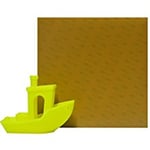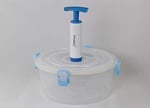All manufacturing equipment requires maintenance, small desktop 3D printers included. Manufacturers usually provide a small checklist of preventive maintenance actions, but unfortunately, people tend to postpone, if not ignore altogether, preventive maintenance.
There are, however, several important benefits that come with keeping up a regimen of routine maintenance. A properly maintained machine will perform as intended, if not better, and periods of downtime can be avoided. The time and effort put into maintenance tasks can save hours of troubleshooting and even days and weeks of waiting for spare part deliveries. More importantly, regular maintenance is a critical safety factor, especially when dealing with desktop 3D printers.
In this article, we’ll provide an overview of the different actions required to keep fused deposition modeling (FDM) 3D printers in good shape, ensuring reliable and quality prints. Instead of detailed tutorials, we’ll discuss the basics, including why each method is important.
Tooling Up

Before you get started, it’s probably a good idea to have a good toolkit on hand. This will definitely make life easier. A basic kit should include the following:
- Screwdrivers, allen wrenches, and pliers
- A wire brush (optional but recommended)
- Grease or lubricant for axes and guides
- Cleaning materials, like cloths and IPA
- A small brush for dusting off electronics
In addition to the above, which will come in handy for maintenance and cleaning, some other tools and accessories will be useful (some more mandatory than others) in your overall 3D printing experience. And while you’ll see a variety of prices and brands, remember that sometimes something cheaper can end up being more expensive: If you’ve got to repeatedly buy tweezers because they’re not the best quality, the investment of buying a pricier but more durable pair can be well worth it.
Preventive
Preventive maintenance refers to routinely performed tasks that keep the machine running smoothly and decrease the likelihood of unexpected failures. It also extends the lifecycles of components, reducing the costs associated with eventually replacing these parts and the downtime required to perform this work.
The frequency of preventive maintenance checks depends on the frequency of use: The more frequently a machine is used, the more often preventive tasks must be performed.
Light Cleaning & Inspection
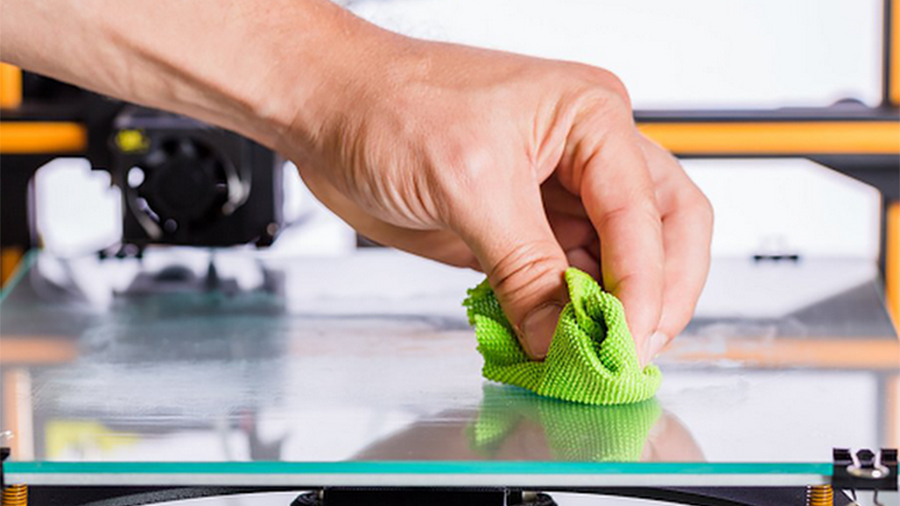
First off, take some time to inspect the machine and its main components. To accurately assess any damage and potential issues, some cleaning comes in handy. For now, a simple dust off should be enough.
All electrical cables and connectors should be checked for damage and whether they’re tightly connected. Pay special attention to the hot end and heated bed connectors, as these take up higher current, thus posing a potential fire hazard.
Mechanical components should be inspected for wear and tear, too. Screws should be re-tightened as needed, especially those attached to plastic parts that are prone to get loose over time. Check all belt pulley screws and tighten as needed.
For V-slot 3D printers, such as most Creality printers, be sure to check the carriages for wobbling (both the bed and printhead); this may happen if the wheels are too loose. Alternatively, if the wheels are too tight, the carriages may not move fluidly. Tighten or loosen the wheels as needed (if needed at all).
Not performing this task can lead to:
- Dust accumulation and impairment of movement
- Electronic malfunction due to damaged cables and connectors
- Vibrations and ringing
Axis & Guide Checks
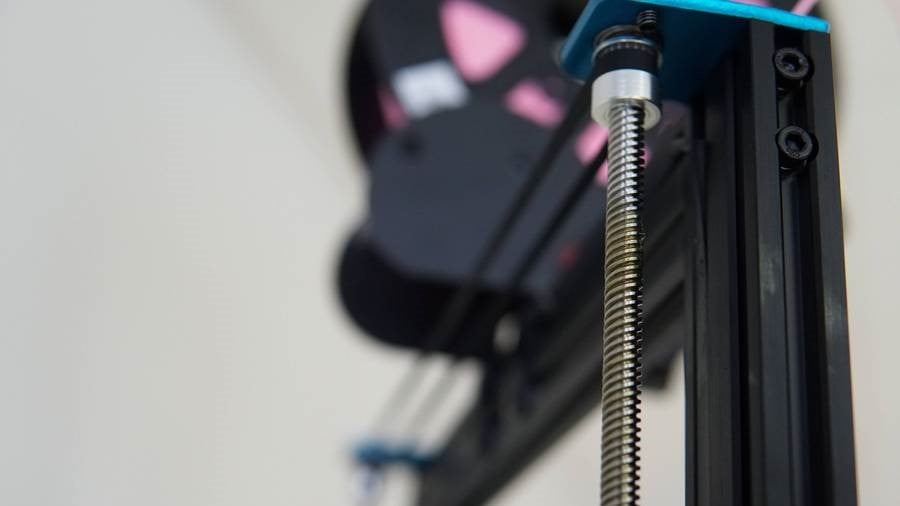
Linear guides ensure smooth and precise motion along axes. When properly maintained, they can improve overall print quality, as FDM is highly dependent on well-controlled linear movement.
There are also fire safety benefits. Mechanical friction and movement impairments will require more torque from the stepper motors, often leading to overheating.
Both the linear rods with ball bearings and the linear rails with carriage slides require some sort of lubrication to reduce the wear and tear generated by friction. In fact, depending on how long these components have been operating without lubrication, it might be good to check for replacements. Lubricating the leadscrews (usually in the Z-axis) is also recommended, although frequently ignored as well.
Selecting a Lubricant
There are literally dozens of different greases out there, so be sure to check what your 3D printer manufacturer recommends. With that said, common lubricants for 3D printers include white lithium greases and dry lubricants like silicone and Teflon.
Keep in mind that WD-40 is not a lubricant! Applying it to your linear rods and rails can even remove lubricant.
Not performing this task can lead to:
- Excessive noise
- Layer lines on the printed object
- Stepper motors overheating
Belt Tension Alignment
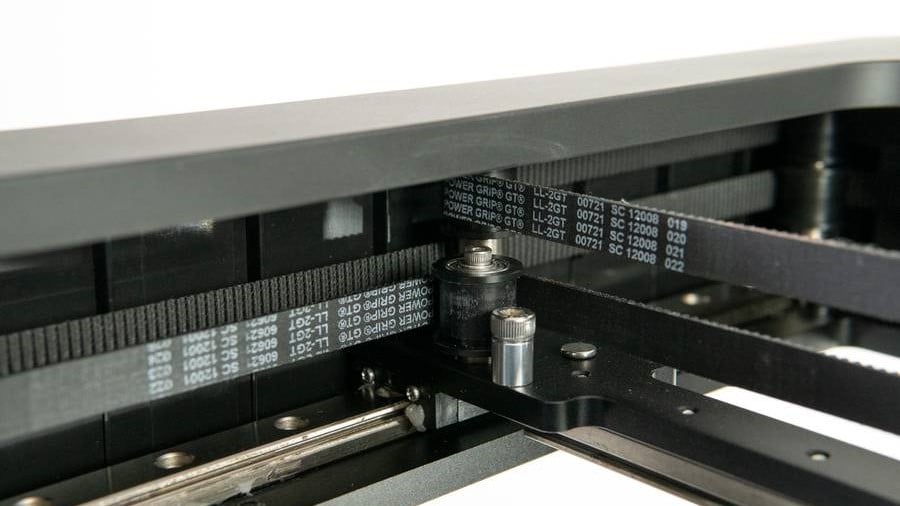
Most 3D printers utilize timing belts in at least two axes. Lightweight belts transfer motion very efficiently but must be tensioned just right.
If they’re too loose, the belt can slack and even skip teeth. Further, they won’t respond well to sudden changes in speed and direction, with surface quality degradation particularly noticeable at higher printing speeds or in heavier setups, such as direct extrusion ones. Too tight, and the motors will be stressed and overheat.
Belt Tension Adjustment
The timing belts used in desktop 3D printers are usually made of rubber and sometimes reinforced with fiberglass or steel. Regardless of the build, they’ll eventually lose tightness and require adjustment. To help with this, some manufacturers, like Prusa, provide tensioning guides.
Many desktop 3D printers have built-in belt-tensioner mechanisms that are quite simple to use and typically require a simple screw adjustment. Other machines might require a bit of tinkering to adjust the tension. If that’s your case, maybe consider printing and installing a tensioner mechanism; there are plenty of models on Thingiverse.
Not performing this task can lead to:
- Layer shifting
- Backlash issues
- Dimensionally-inaccurate prints, either bigger or smaller than they should be
Nozzle Care
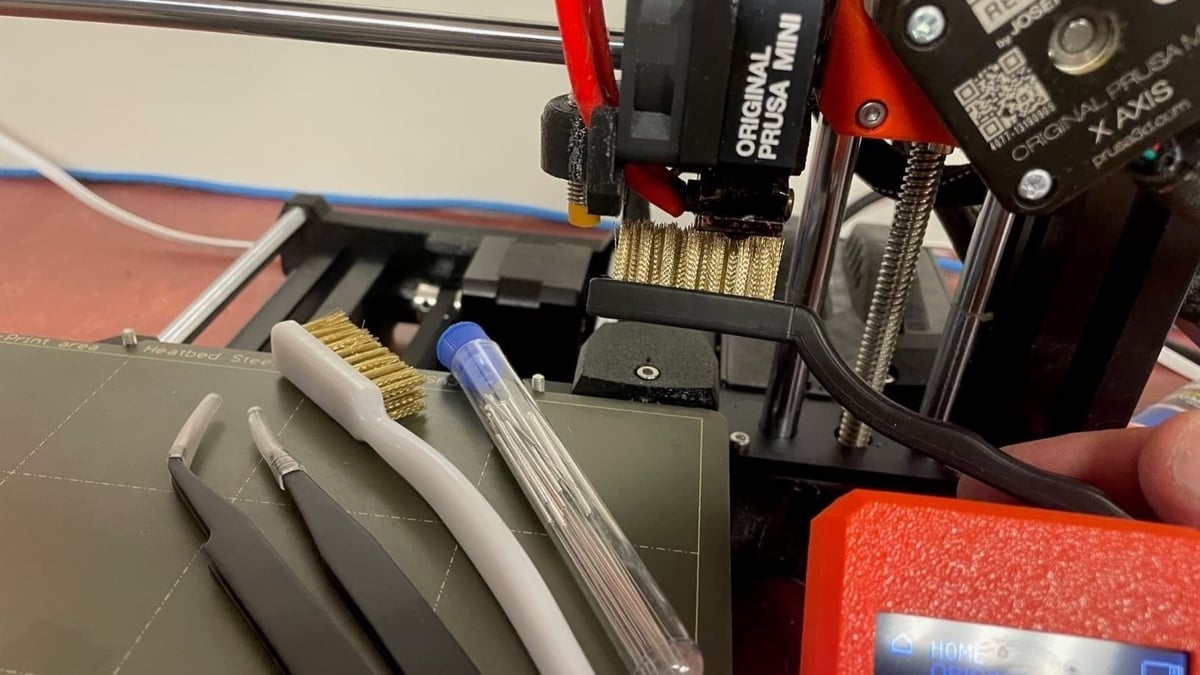
Pay special attention to your printer’s nozzle. It’s obviously one of the most important parts of an FDM 3D printer, but even so, people tend to neglect it until it gets clogged.
Even without a clog, the nozzle can externally become quite dirty. This could potentially ruin a print with blobs and also fill the room with that awful burnt-plastic smell.
Routine Nozzle Cleaning
Try and keep the nozzle as clean as possible. Heat it up and use a wire brush to remove all melted and unmelted plastic that’s been accumulating over successive prints. Small pliers or thick cloths could also be used, but just be very careful not to burn yourself.
While you’re at it, clean the heater block as well, and maybe consider adding a silicone cover to it.
Note: If you’re using a wire brush, it’s recommended to turn your printer off, as the extra metal can cause shorts between powered components. (There are even reports of some damaging their mainboards.)
Clogs
Sometimes the nozzle is only partially clogged, and that’s slightly more difficult to catch. While there are some filaments specifically for cleaning on the market, if you suspect there’s a clog, try performing a cold pull. Alternatively, you could turn the nozzle temperature as high as possible and feed through some high-temp filament such as ABS or PETG.
Last but not least, proper filament swapping goes a long way. To prevent any clogging, always remember to set the nozzle temperature according to the material with the highest print temperature.
Not performing this task can lead to:
- Extrusion issues, such as under-extrusion and over-extrusion
- Clogging and oozing
- Blobs and zits
Build Platform Check
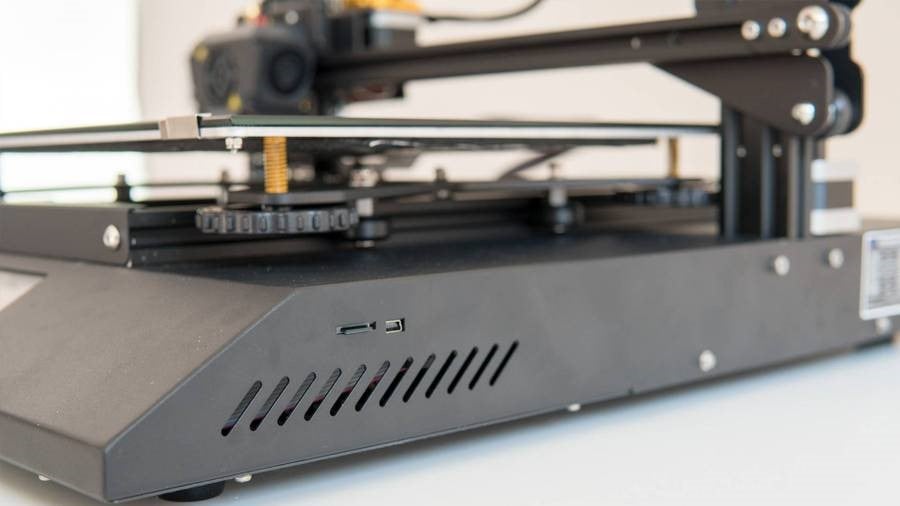
Proper first layer adhesion is a top priority for FDM 3D printing. Without it, parts can detach mid-print and corners may warp, especially when printing temperature-sensitive materials like ABS. Regardless of the strategy used to stick prints to the bed, be sure to keep it as clean as possible.
Dust and grime accumulate very easily, and even the organic oils present in our fingertips are enough to ruin plastic adhesion. For glass beds, cleaning alcohol like IPA is recommended.
The use of glue sticks is a common solution, but it can accumulate in thick layers, requiring you to scrape and wash the build plate with soap in a sink. For those using tapes or special adhesion stickers, check for damage and replace them when necessary.
Bed Leveling
Once cleaned, make sure the bed is leveled. That’s also a good idea even when auto-leveling is used. For those using high thermal contraction materials like nylon or PC, perhaps PEI sheets or a hardware upgrade like a new heated bed may be suitable.
Not performing this task can lead to:
- Warping
- Uneven first layers
- Poor first layer adhesion
Filament Care

Small dust particles may accumulate on the filament depending on how the spool is stored or how long it has been sitting in the printer. These particles can be so tiny that they often go unnoticed, but they can impact your prints and nozzle just the same.
Proper storage might be just what’s required to prevent particle buildup (and there are plenty of ideas depending on your setup). Protection from moisture is an added bonus, as you’ll otherwise have to deal with moist material that needs to be dried before use.
Dust Filters
For filaments already fed into a machine, dust can gather rather quickly, especially in a shop environment or where 3D printers are sitting next to CNCs. So-called sponge filament filters, which are attached to the filament before the extruder, can be used to grab dust as the filament passes.
The filters are DIY, and many models are available on Thingiverse. Some users even apply a bit of oil to the sponges so as to lubricate stiffer filaments like PLA in long Bowden setups. The efficacy of these oil filters, however, is much debated.
So consider adding a dust filter to your printer. We can promise that you’ll be surprised by the amount of dirt caught in it. Just remember to clean and periodically replace the sponge as part of your preventive maintenance routine.
Not performing this task can lead to:
- Nozzle clogging and oozing
- Friction buildup on Bowden tubes
- Stringing due to moisture-filled filaments
Calibration
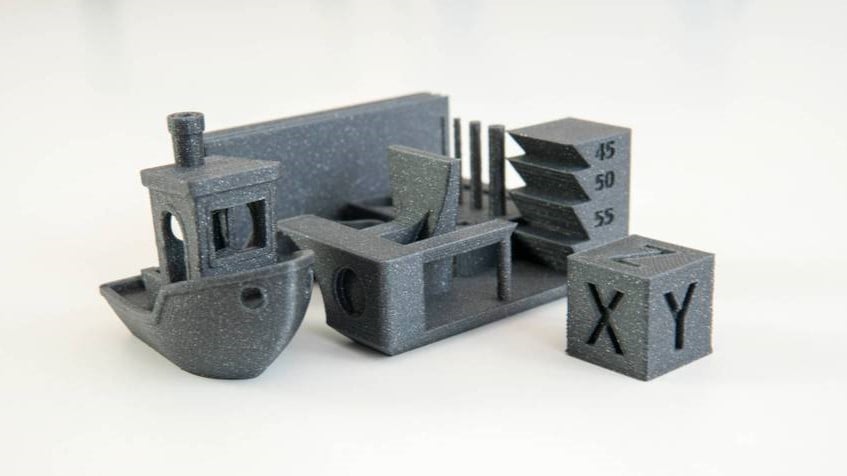
Many of the preventive maintenance tasks covered so far involve disassembly and adjustments. The final step is to make sure the machine is working, and working well.
If you feel confident that everything is in working order, start with a simple print like the XYZ calibration cube. It’s a good way to check bed adhesion and surface quality while also allowing you to assess what else needs to be adjusted.
If it’s been a long time since your last thorough calibration, we strongly suggest you go through a complete calibration process, including the extruder’s steps per millimeter.
Finalize your calibration by printing the good old 3D Benchy. Check the print for quality, accuracy, cleanliness, and the other characteristics.
If by any chance something goes south during your test prints, this is the time to troubleshoot.
Not performing this task can lead to:
- Low-quality prints
- Extrusion issues, such as under-extrusion and over-extrusion
- Overheating
Planned
Planned maintenance differs from preventive, as it happens less often, isn’t oriented around routine equipment checks, and usually requires more effort. For desktop 3D printers, it involves tasks and issues that are generally more difficult to assess, which we’ll see below. Nonetheless, these are important actions that will contribute to higher performance and reduce unexpected issues.
Nozzle Replacement

Even with the routine hot end nozzle cleaning discussed above, the standard brass nozzles from most FDM 3D printers wear out over time, both externally and internally. This is often accelerated for those who print composite materials like carbon fiber and metallic filaments.
As the nozzle degrades over a period of time, it’s quite difficult to spot this damage. Though there are no sudden changes in print quality, subtle degradation occurs print by print. For this reason, it’s very important to schedule replacements over the year to make sure the nozzle will always be in good condition.
Frequency of Replacement
How often the nozzle should be replaced depends on the usage. A well-maintained nozzle used only with PLA can last for a long time, but as a general rule, replacements should occur every three to six months. To avoid special calibration, it’s a good idea to do the replacement while you’re doing the preventive maintenance tasks described above.
Types of Nozzles
Brass nozzles are inexpensive and good for non-abrasive filaments such as PLA and ABS. If you’re printing with abrasive composite materials, you should consider changing to another type of nozzle that is specially designed to handle these materials. Upgrading to E3D’s hardened steel or Olsson Ruby nozzles would significantly reduce how often you’ll need to replace your 3D printer’s nozzle.
Replace the Extrusion Setup
While you’re tinkering in the same area, if you’ve got a Bowden extrusion setup, depending on what materials you print, you might want to consider switching it to a direct extrusion one. A Bowden setup has its pros – it allows for higher acceleration, jerk, and print speed – but if you’re 3D printing flexible or abrasive filaments, it can be a lot more challenging because of the retraction settings and binding to the Bowden tube. Depending on the printer you have and how comfortable you feel with the change (and if you deem it’ll benefit you), you might want to change to a direct extrusion setup.
Thorough Cleaning
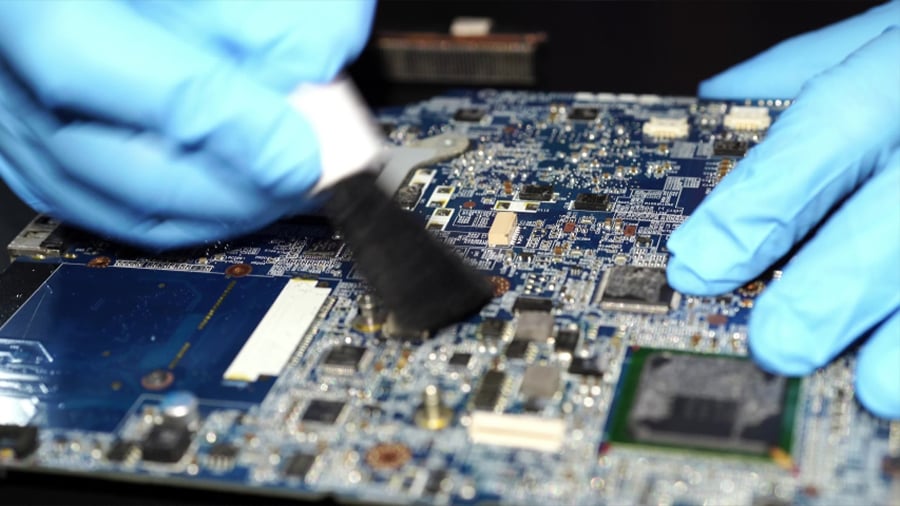
This scheduled maintenance is a very deep cleaning that targets “hidden” components, such as electronic boards and fans. These parts can gather dust just as much as others and usually go unnoticed since they’re usually kept covered.
Fans are usually dust-gatherers, but not in a good way: Their rotation can be impaired or their ducts obstructed. Due to moisture and organic materials, dust can also damage electronic boards, possibly leading to malfunctions and performance issues. The board’s thermal management properties may additionally be disrupted.
Dirt builds up on extruder gears: It’s usually fine plastic powder that comes from grinding on the filament. Many 3D printers make this compartment accessible, so it might not require much effort after all. Access to the electronic boards and fans, however, will require some disassembly.
A small, simple brush is usually enough to take care of these issues.
Firmware Updates
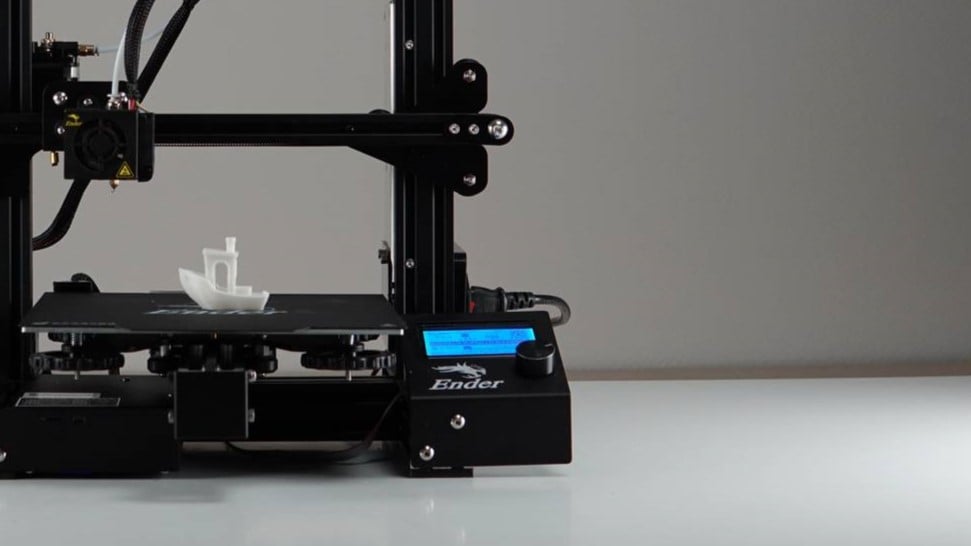
Last but not least, remember to check your 3D printer’s firmware for updates. Some manufacturers, like Prusa Research, release software updates more often than others, but for most printers, it usually happens every six months or so.
Although manufacturers usually recommend having the latest software running on your printer, the process of updating might be very time-consuming, and sometimes, it might not be worth it. Nevertheless, the process of checking for firmware updates and considering whether the upgrade is worth it should be treated as a maintenance step in itself.
While at it, be sure to check your favorite slicer for updates as well. Well-maintained slicers usually try to keep up with and accommodate new and improved printer features, so you don’t want to fall behind.
License: The text of "3D Printer Maintenance: 10 Tips to Maintain Your FDM Printer" by All3DP is licensed under a Creative Commons Attribution 4.0 International License.
CERTAIN CONTENT THAT APPEARS ON THIS SITE COMES FROM AMAZON. THIS CONTENT IS PROVIDED ‘AS IS’ AND IS SUBJECT TO CHANGE OR REMOVAL AT ANY TIME.


